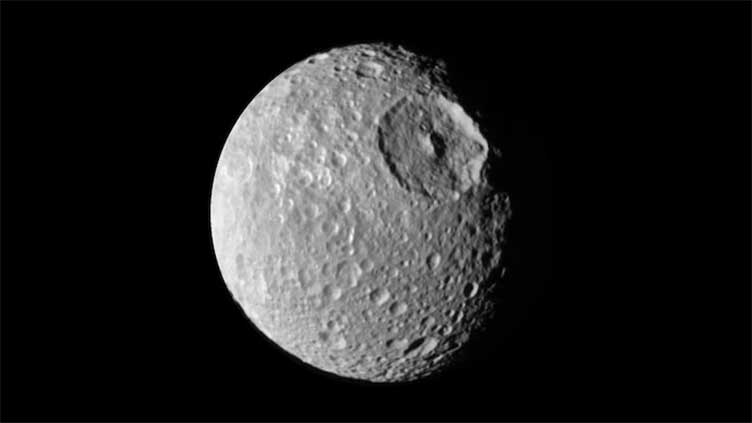There is an ocean hiding on this moon. No, it's not where you think it is

Technology
The conditions on the moon could provide clues about how life might arise in the cosmos
(Web Desk) - The search for water reserves on the Moon remains one of the biggest driving force behind the lunar exploration.
A new discovery now points that there is a vast ocean hiding beneath it. But there is a catch.
This moon is not around Earth. Instead it is located far away from us.
In a revelation that has stirred the scientific community, Saturn's moon Mimas, often likened to the "Death Star" from the "Star Wars" saga due to its distinctive Herschel crater, is now believed to harbour a secret beneath its icy facade — an ocean of liquid water.
This discovery, derived from data collected by Nasa's Cassini spacecraft, suggests that the subsurface ocean is encased within a 12-19 mile thick icy shell and may have formed relatively recently on a cosmic scale — somewhere between 5 and 15 million years ago.
The existence of this hidden ocean makes Mimas an intriguing candidate for astrobiological studies, particularly in the quest to understand the origins of life.
Earth's earliest life forms emerged from its ancient seas, and the conditions on Mimas could provide clues about how life might arise elsewhere in the cosmos.
Valery Lainey, an astronomer at the Observatoire de Paris and lead author of the study published in Nature, expressed surprise at the finding, noting that Mimas' heavily cratered surface shows no signs of such an ocean at present.
Mimas is now counted among the five known moons in our solar system with evidence of subsurface oceans, joining the ranks of Saturn's Enceladus and Titan, as well as Jupiter's Europa and Ganymede.
The presence of an internal ocean suggests a significant heat source within Mimas, which transforms ice into water. The moon's elliptical orbit around Saturn subjects it to varying gravitational and tidal forces, causing periodic deformations in Mimas' interior that generate heat.
This subterranean body of water accounts for more than half of Mimas' volume, though it represents a mere fraction compared to Earth's oceans.
The contact between the water and Mimas' rocky core could enable complex chemical reactions, potentially setting the stage for biological processes.
While Enceladus is already known for its life-supporting potential, Mimas' nascent ocean poses both an opportunity and a challenge for the emergence of life.
Gabriel Tobie, a planetary scientist and co-author of the study, suggests that while the youthfulness of Mimas' ocean might impede the development of life, the exact time required for life to originate remains unknown.


